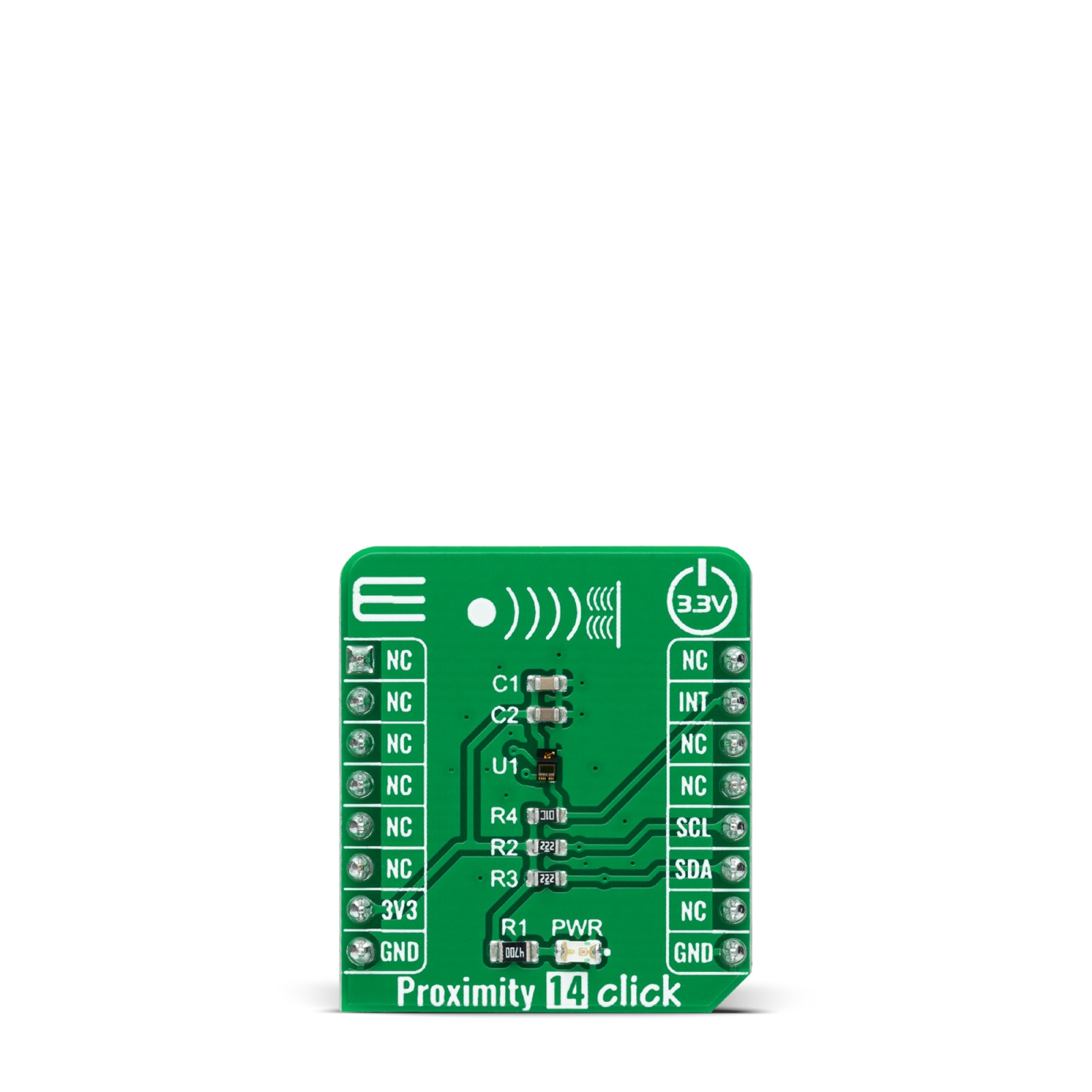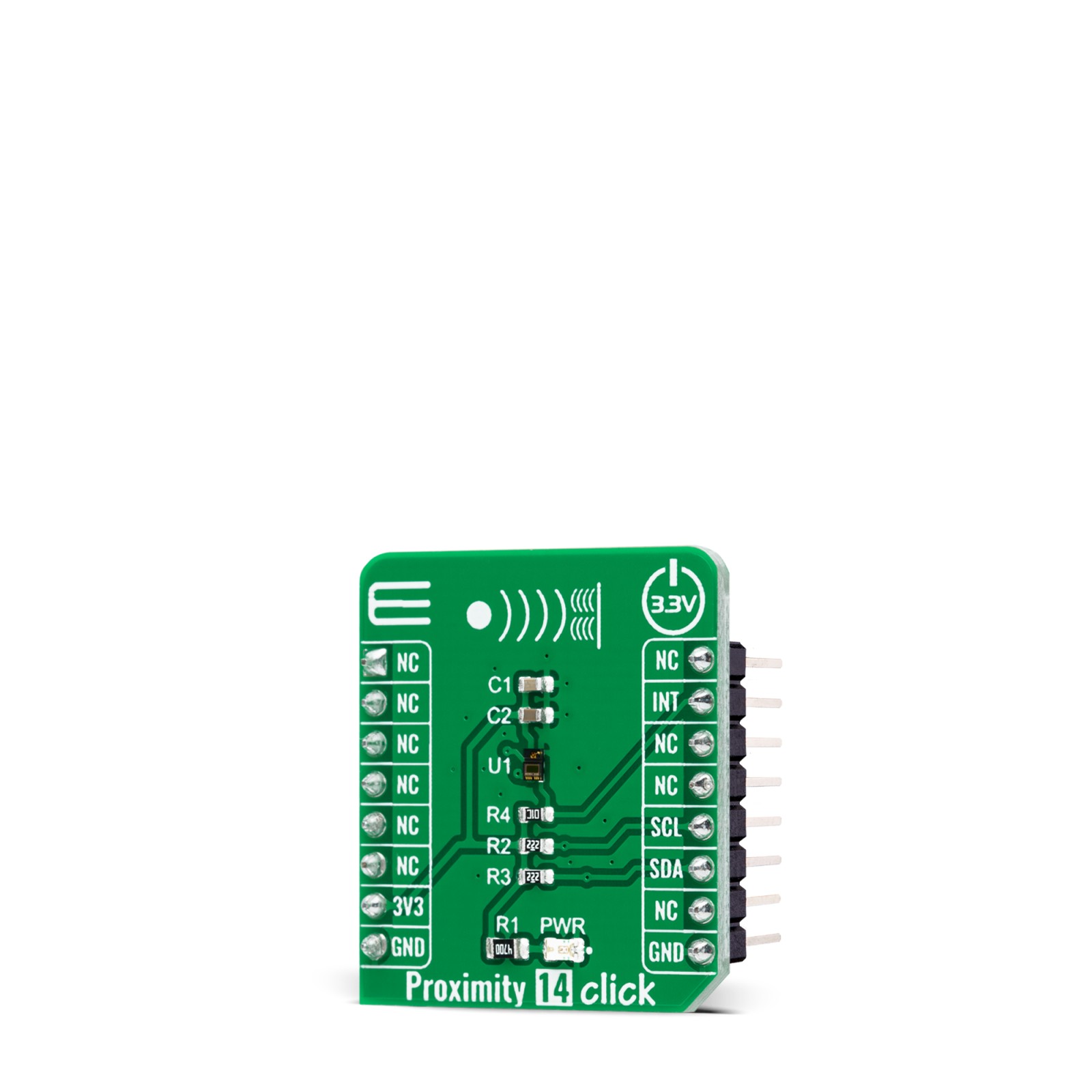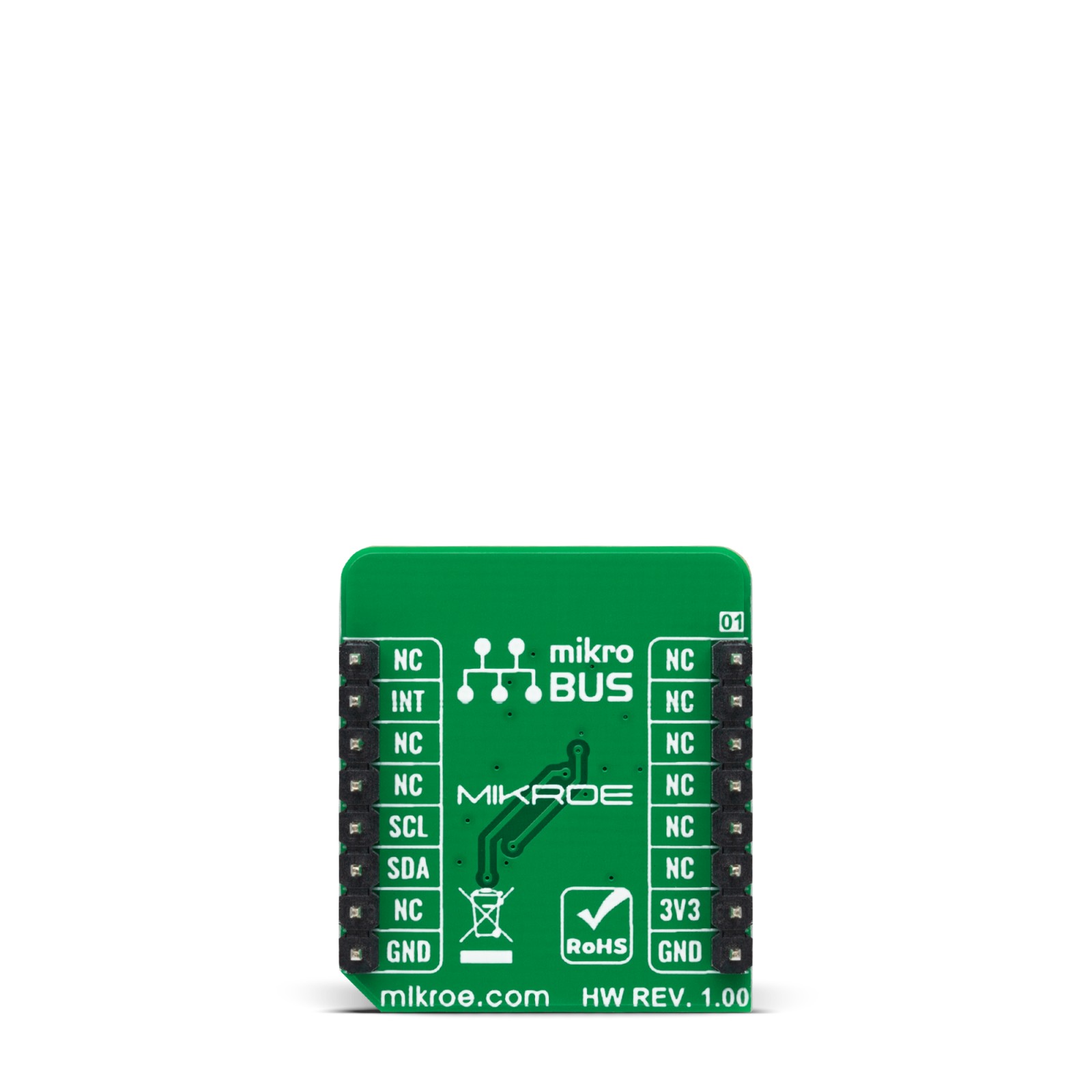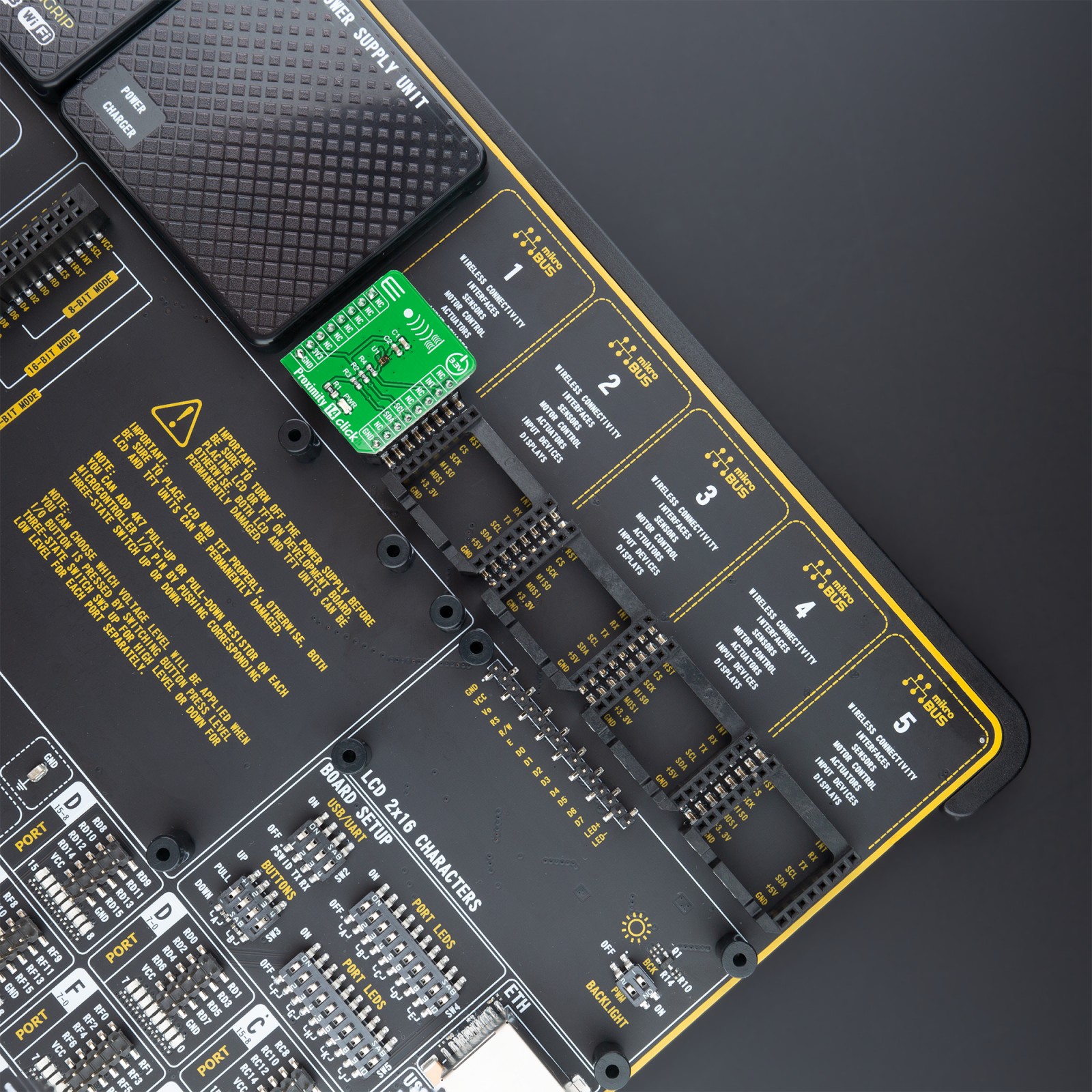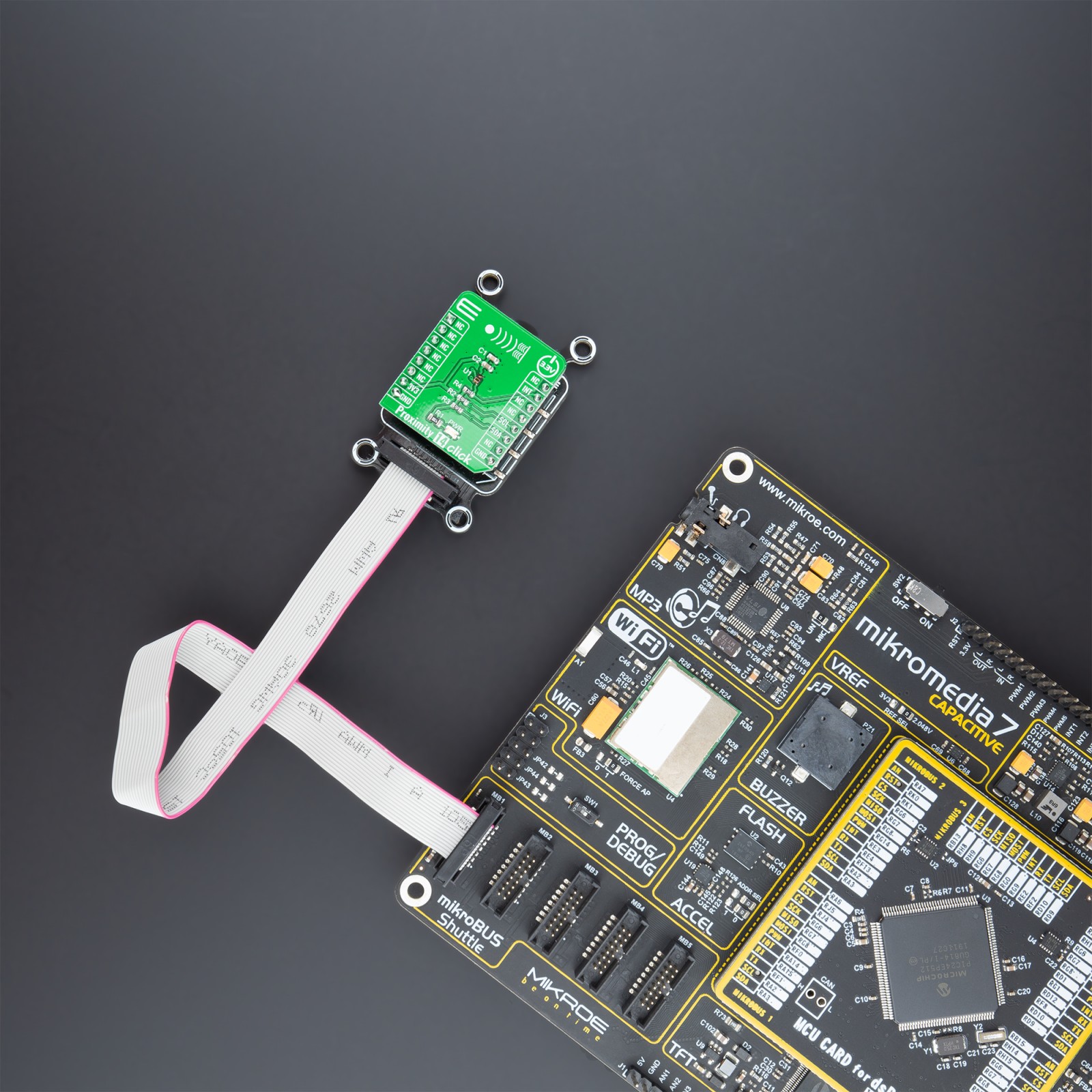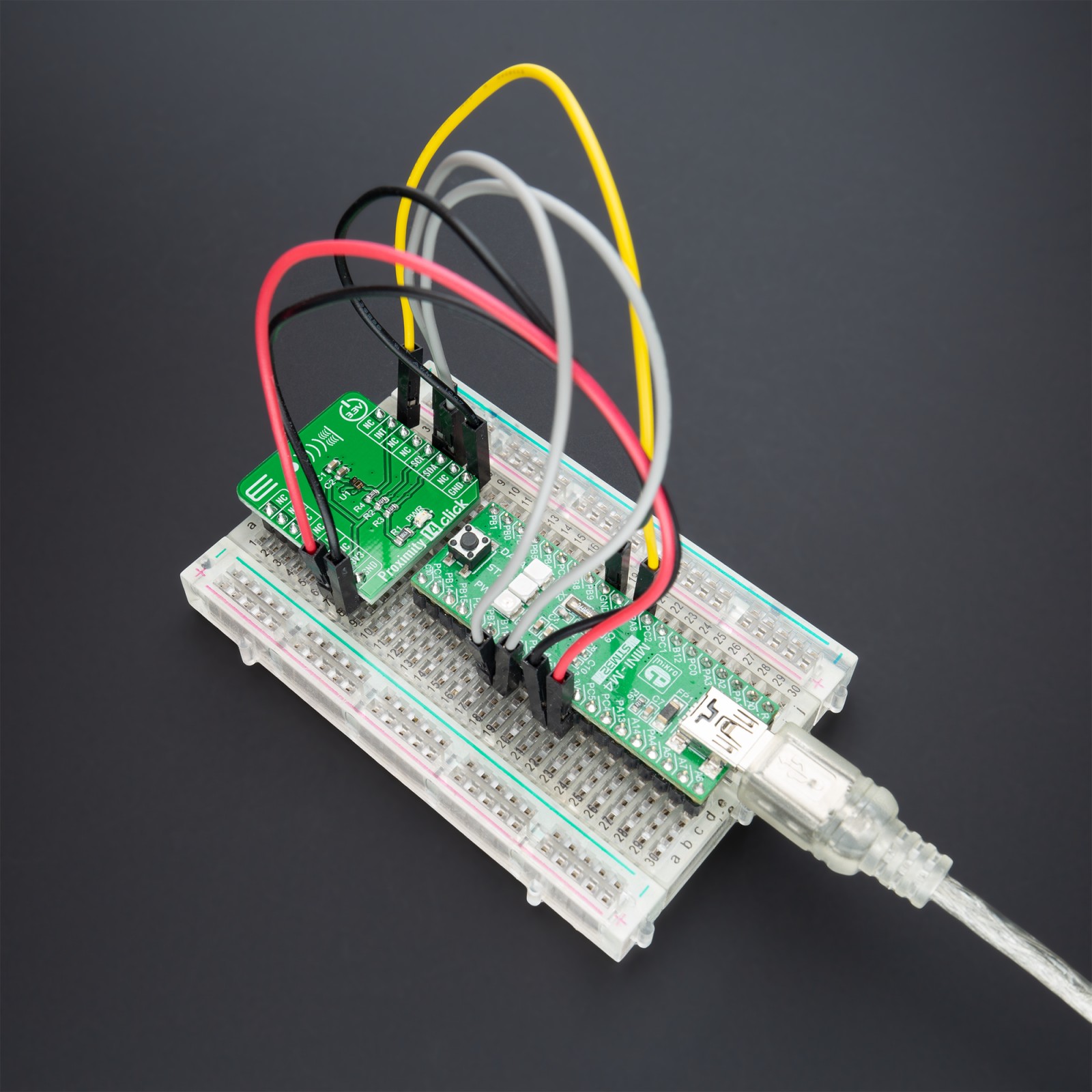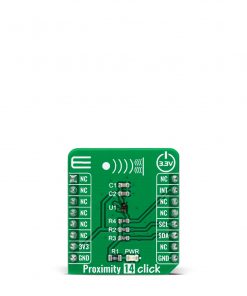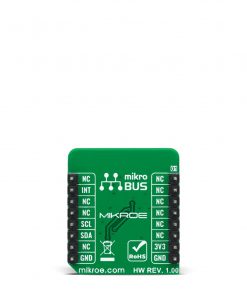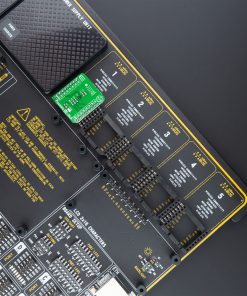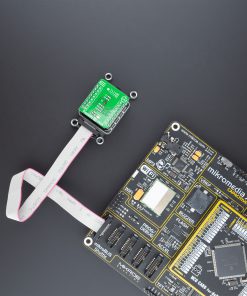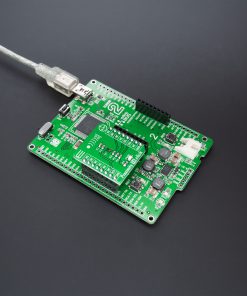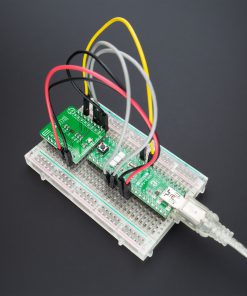Proximity 14 Click
R145.00 ex. VAT
Proximity 14 Click is a compact add-on board that contains a close-range proximity sensing solution. This board features the VCNL36825T, a fully integrated proximity sensor from Vishay Semiconductors. It combines a high-power VCSEL (vertical-cavity surface-emitting laser) and a photodiode for proximity measurement and signal processing IC in a single package with a 12-bit ADC. It provides proximity detection in applications with highly tight space requirements through its standard I2C bus serial digital interface and comes with a programmable interrupt function. With a range of up to 20cm (7.9″), the VCNL36825T greatly simplifies its usage in consumer and industrial applications because no mechanical barriers are required to isolate the emitter from the detector optically.
Proximity 14 Click is supported by a mikroSDK compliant library, which includes functions that simplify software development. This Click board™ comes as a fully tested product, ready to be used on a system equipped with the mikroBUS™ socket.
Stock: Lead-time applicable.
| 5+ | R137.75 |
| 10+ | R130.50 |
| 15+ | R123.25 |
| 20+ | R118.61 |

